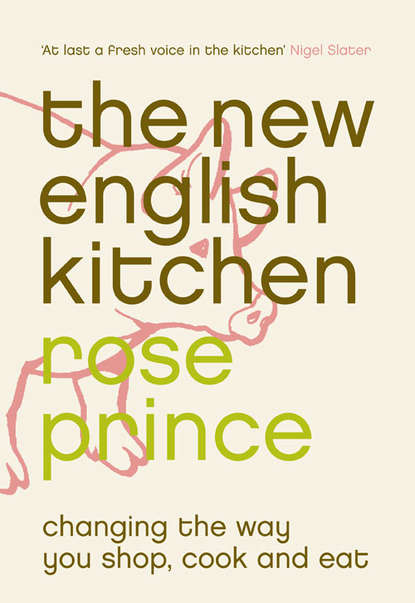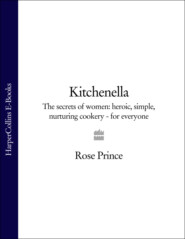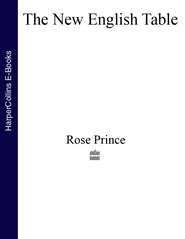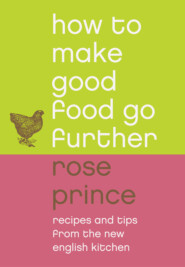По всем вопросам обращайтесь на: info@litportal.ru
(©) 2003-2024.
✖
The New English Kitchen: Changing the Way You Shop, Cook and Eat
Настройки чтения
Размер шрифта
Высота строк
Поля
savoury pan scones
Try to find stoneground white flour for these scones; it will give them a lovely chewiness. A really heavy-based frying pan or flat griddle is essential if you cook them on the hob, otherwise they’ll burn.
The nicest way to eat pan scones is while they are still warm, halved and buttered.
Makes 8–10 scones
480g/1lb plain flour
1 teaspoon bicarbonate of soda
1 teaspoon cream of tartar
2 teaspoons salt
90g/3oz beef dripping (see here (#litres_trial_promo)) or butter (or 6 tablespoons
olive oil)
300ml/
/
pint sour milk (see above), buttermilk or low-fat yoghurt
Sift all the dry ingredients into a bowl and rub in the fat. Make a well in the centre and stir in the milk, buttermilk or yoghurt to make a smooth dough.
With floured hands, quickly shape the dough into small rounds, 2cm/3/4 inch thick. Heat a heavy-based frying pan or a flat griddle and cook the scones for 4 minutes on each side, until golden and slightly puffed. Alternatively, bake them in an oven preheated to 230°C/450°F/Gas Mark 8 for 10 minutes.
kitchen note
You can play around with the flavour of scones, adding grated or chopped cheese (it’s a good way to use cheese that is no longer presentable on the table). Try to use one of the many interesting British farmhouse hard cheeses. Crumbled pork crackling makes them wickedly delicious, too. Alternatively, try chopped spring onions, dried thyme or rosemary.
drop scones
I include these because they were one of the first things I ever made myself, and because my mother often made them for tea to eat with golden syrup and butter. The ingredients are pure store cupboard, so you won’t have to rush out and buy biscuits on a Sunday when someone drops in for tea. The recipe is from a much-Sellotaped 1950s copy of The Constance Spry Cookery Book – one of my bibles.
Makes about 12
240g/8oz plain flour
/
teaspoon bicarbonate of soda
/
teaspoon cream of tartar
/
teaspoon baking powder
1 tablespoon golden caster sugar
a nut of butter
1 tablespoon golden syrup
about 300ml/
/
pint milk
1 egg
Mix the dry ingredients in a bowl, then rub in the butter and add the syrup. Add half the milk, mixing well with a wooden spoon. Break in the egg and beat well, then add the remaining milk. The mixture should just drop from the spoon. Allow to stand for 10–15 minutes, not more.
Heat an oiled flat griddle or heavy-based frying pan. When it is moderately hot, drop in the mixture in spoonfuls and cook for 2–3 minutes, until small bubbles appear on the surface. Flip the drop scones over and cook for about 30 seconds to brown the other side. Wrap the scones in a tea towel to keep them warm while you cook the rest, then serve with butter, jam and syrup.
kitchen note
It won’t be necessary to re-grease the pan as you cook each batch; the drop scones are all the better for being cooked without much oil at all.
flat breads
The earliest breads were unleavened – they did not contain yeast. They were rolled or pressed out and baked absolutely flat. The offspring of these ancient flat breads can still be found in the Middle East, where there are hundreds of versions, including breads no thicker than card but floppy enough to wrap around herbs and salty cheese, and slightly thicker, round flat breads, which are put to use as a jacket for kebabs. I remember when pitta bread was considered avant garde, but now flat breads in every guise can be bought from Middle Eastern and Asian shops; even supermarkets sell several versions of flat bread, or ‘wraps’ – a word that came from the United States. There are soft breads such as Indian naan and chapatis or Mexican tortillas, crisp breads like lavash to crumble into soups and salads, or flaky roti to parcel up West Indian curries.
Making flat breads at home is good economics: a batch of up to ten can be made from 360g of good flour, worth less than 50 pence, which comes in at approximately a third of the cost of ten tortilla wraps or pitta breads.
basic flat bread
I cannot even begin to give an authentic recipe for every kind of flat bread but the recipe below, adapted from Tom Jaine’s Making Bread at Home (Weidenfeld & Nicolson, 1995), makes a good, crisp, flat bread that can be broken into soup or a leafy salad, or used to scoop food into your mouth. It uses yeast, but you could use a little dough left over from the previous baking instead for the same lightening effect.
The secret of all flat breads is to rest the dough in the fridge. This gives the gluten time to relax, so that you can roll or press the bread out very flat. It also sours the dough slightly, adding flavour.
Makes 8–10
360g/12oz unbleached strong white flour (or 240g/8oz flour and 180g/6oz stored dough from the last bread)
1 teaspoon salt
7g sachet of fast-action (easy-blend) yeast
240g/8oz low-fat yoghurt
Mix together all the dry ingredients, then stir in the yoghurt. Knead, in a machine or by hand (see here (#ulink_9c014d31-90bf-5a75-bdb9-ad6b44c47484) and here (#u37a000f9-6351-43bd-a9f5-46765d4791b8)), until the dough is smooth and elastic. Cover with cling film and store in the fridge for at least 4 hours, or overnight.









